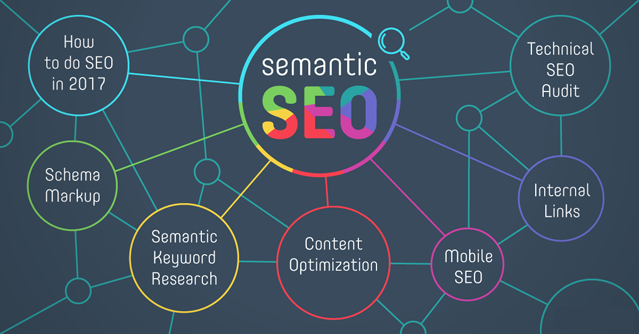It doesn’t matter how many hours you dedicate to creating high-quality content for your customers. Unless you optimize your copy for SEO rankings, you’ll never reach as many eyes (and the right ones) as you would like.
Traffic to your website is driven by SEO, or search engine optimization. Whether it’s a blog, your homepage, or a vividly descriptive essay on your collection of coffee mugs, search engine optimization (or SEO), is the only way your copy will make its way to the right audience.
In the past, SEO optimization relied solely on including as many keywords as possible into your content. If you included enough keywords, Google would alert those searching for “coffee mug essays” or “the best essays about coffee mugs” to your website. That simple strategy would notify Google that your page is the place to go for personal coffee mug content.
While SEO optimization used to be quite simple, it has become more complex as the internet grows more and more intuitive.
The newest innovation in traffic-driving efforts is Semantic SEO, and learning how to use it will completely change the way you approach content creation.
If you’re ready to provide more value and information to your online audience, let’s get started.
What Is Semantic SEO?
When marketers and companies got the hang of traditional SEO techniques, they started stuffing keywords into their content like there was no tomorrow, including as many relevant phrases and searches as they could so the copy ranked higher on Google. Clearly, this practice didn’t result in high-quality content-and Google took notice of the issue.
With Semantic SEO, driving online traffic is becoming less about using specific keywords and more about improving the meaning of those keywords and phrases. Adding meaning and value to content is a new layer of SEO that requires content creators to think more broadly and creatively. In general, the more depth, length, and value the piece gives the reader, the more traffic it will generate.
Rather than hone-in on just one phrase like “best enchilada recipe,” it’s a much better practice to concentrate on the topic of laundry detergent as a whole. Expand on the subject by answering as many questions as you possibly can about enchilada recipes, such as:
- What do you put inside enchiladas?
- How do you make enchiladas not soggy?
- Do you cook tortillas before making enchiladas?
- Do you cover enchiladas while baking them?
You get the picture.
Now, instead of just searching a page for the right keywords, Google now searches it to see which content is providing the most insight into that keyword.

The purpose of this change is not to make your copywriting agency, content creators and marketers work harder (or spend more time creating copy). Rather, the aim is to reduce the amount of online spam and information that is unuseful, inaccurate and misleading. So even though it will be tedious in the interim, most of us who are in content creation understand that Semantic SEO is for the greater good.
Using Semantic SEO In Your Content
There are a few key things you need to keep in mind when using Semantic SEO for your content:
- You must contribute valuable information to the reader regarding a single, general subject.
- You need to get a clear idea on everything the reader wants to know about that subject.
The first part makes total sense—give the reader valuable and helpful information by the time they’ve reached the end of the page. Keep your information targeted and don’t go off on tangents that are not useful to the subject. Stay direct with your focus and make sure your point is strong.
The second point is where Semantic SEO gets more complex. To understand what the reader is hoping to achieve with this search and anticipate any additional questions they might have, you have to do some research.
When Google, Bing, and other search engines analyze copy for Semantic SEO, they do so from the point of view of the user searching. Not only do they look for content that offers value, but they also determine the results based on the person searching for them: where they reside, what they have previously searched for, what language they speak, etc.
The goal of Semantic SEO is to improve the user experience. In order to make your content more relevant, you need to understand who your users are—and what they’re looking for.
Tip: If you struggle with writing, defining your audience, or how to nail your brand voice to best talk to your audience, take a copywriting course before you jump in; it will make things much easier.
Understanding The User
You need to understand the meaning behind why your reader wants to learn more about a topic or issue so you can create fully fleshed out content that includes everything they need to know. This practice helps your content become a valuable online source—which Google loves.
As an example, say you’re creating content about adopting your first dog. There’s a high likelihood that the person searching for “adopting first dog” is a first-time dog owner and possibly a first-time pet owner. From this, you can deduce that they’re looking for information on what to expect, what to purchase and how to prepare their home and lives for a new furry friend.
With this in mind, you can include other information this person would find helpful, such as:
- Where should rescue dogs sleep first?
- What do you do when you adopt a dog for the first time?
- Is it normal to regret adopting a dog?
- What does a dog need for the first night?
- Where are the best places to adopt a dog?
- What are the best breeds for first-time dog owners?
So even though they may have been searching for information on adopting their first dog, your content has provided them with other guidance they’ll likely find helpful. Furthermore, adding additional relevant topics not only provides value to your reader (and impresses Google), but it keeps them on your page longer and increases the likelihood that the user will poke around your site to see what else you have to offer.
The best way you can implement Semantic SEO in your content creation strategy is to ask yourself, after the user has found the information they searched for, what else would they like to know?
Anticipating your audience’s follow-up questions and concerns—and then addressing them in your content—will increase your Google ranking and help your readers.
It’s useful to brainstorm your own answers, but you can also look into the “People also ask” box that appears with all search result pages. This section offers tons of additional, relevant questions people have on a topic you can address in your piece.
Best Semantic SEO Content Practices
So, now that you understand how to integrate Semantic SEO into your content, let’s examine some best practices for optimization.
Before you start creating new articles and blog posts, the first thing you should do is restructure your content strategy to focus solely on topically relevant content. In other words, focus on guides that tell you everything you need to know, rather than short-form blog posts that answer a single question.
Thus, instead of emphasizing “5 Things Every Homeowner Should Know” it’s better practice to focus on “A Complete Guide To Owning A Home.”
Yes, this requires a greater time commitment up front, but you’ll inevitably find that you need to create fewer pieces if they’re evergreen and continually ranked. You can hog the #1 spot on a Google search page for a while when you have that kind of highly valuable content.
You should make sure, when writing long-form guides, you include every aspect of the topic that you can think of that will be helpful and interesting for the reader. Thus, it is crucial that you create an outline before you write anything.
Consider these posts less like articles or blogs and more like eBooks aimed at teaching someone everything they’ll ever need to know about XYZ.
Use those additional follow-up queries (such as the ones found under the”People also ask” section) in your topic outline as subheads to increase visibility and rank higher with Google.
Back in the day of traditional search engine optimization, marketers would also create three to four pages with the same content that was optimized for different keyword phrases. For example, a piece for “best cooling sheets” you would create pages for “top cooling sheets,” “affordable cooling sheets, ” and “best cooling sheets on Amazon.” Like keyword stuffing, Google found this practice to be spammy and unhelpful.
Today, that’s no longer recommended. But it is a good practice to include those multiple variations in your copy. Continuing with the cooling sheets example, your content could include:
- Sheets for hot sleepers
- Best sheets when you sleep hot
- Best cooling sheets 2021
- Cooling sheets cheap
- Cooling sheets that work.
This is a good way to avoid keyword stuffing (which Google hates) while still increasing your chances of traffic from users who are looking for the exact information you have to offer.
Last but not least, make sure your content is extensive enough. When you write, you should set some longer word count goals to strive for. You won’t achieve the ranking you want with a 500-word blog post anymore. Semantic SEO is all about creating content that is long-form, anywhere from 1,000 to 2,000 words. Even pieces as long as 4,000 to 5,000 words are encouraged.
When it comes to Semantic SEO, the more value you can offer the reader the better.
Semantic SEO: Worth all of the Effort?
Absolutely. Search engines are evolving all the time (sometimes even thousands of times per day. Seriously.) and if you want your business to remain competitive, semantic SEO content will keep your business relevant in the eyes of Google.



































